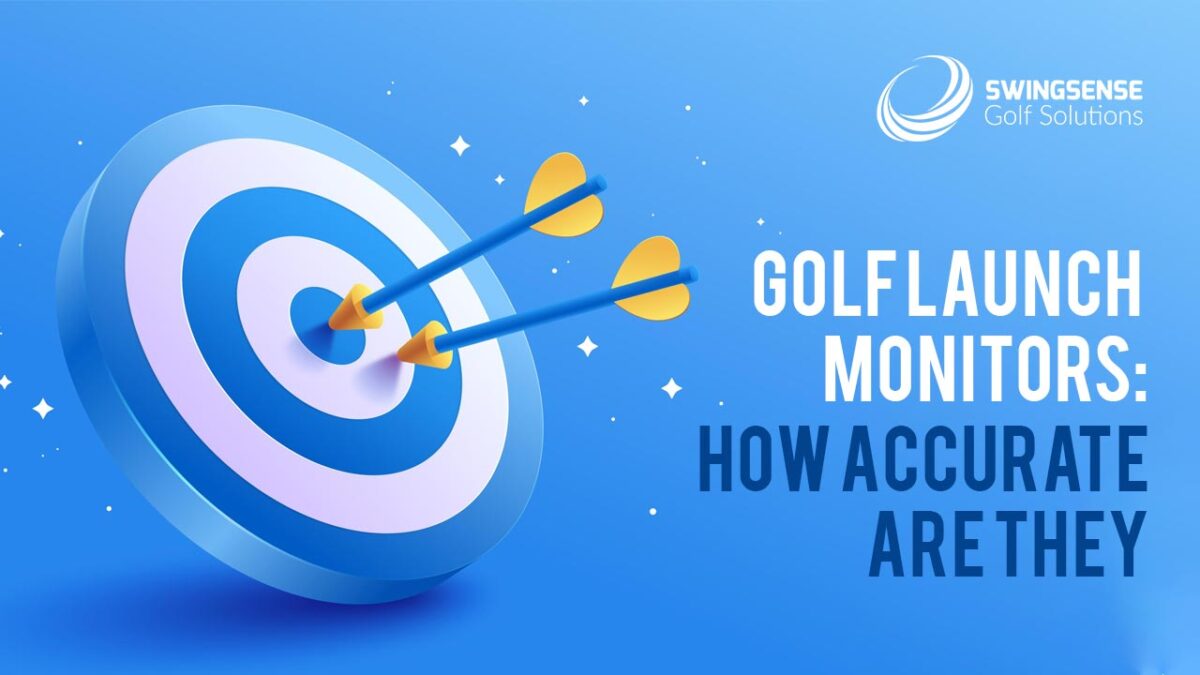Golf is all about precision and meticulousness. No golfer is foreign to the importance of the preciseness of data and their flawless analysis, for even the subtlest difference can make a huge difference in your game. This is the reason golf launch monitors are becoming so popular among golfers, both amateurs and professionals alike. This advanced device helps you measure different aspects of your shots and analyze them so that you can take all the right decisions on the driving range. The few best launch monitors are Garmin R10, ES14, Flightscope Mevo, etc.
However, given the novelty of the technology, many are still unsure of its capabilities. The most frequently asked questions regarding using a launch monitor often come with regard to its accuracy. How accurate these launch monitors are? How far can I rely on them? Which golf simulator provides the most accurate data? The questions are endless. In this article, we have tried to answer some of your biggest concerns regarding the accuracy of the golf launch monitors. Read on to get the device better and make the right choice for yourself.
Are Launch Monitors Accurate?
This is perhaps the biggest question for anyone who has not yet used a golf launch monitor. While there are several explanations and theories to answer this question, the short answer is “definitely yes”. True, the accuracy level of different launch monitors may vary, but almost all of the brands come equipped with reliable and rigorously tested technology that enables them to yield immaculate data. The most common technologies used in launch monitors are Doppler radar, high-speed cameras, infrared sensors, and optical sensors.
- Doppler Radar: the balls interrupt signals emitted by the device. Further, the launch monitors calculate the data by tracking where and when the ball interrupted the signal.
- Optical Sensors: The sensors are mostly placed underneath the hitting surface. They track the club and ball as they pass over the sensors. Thus, they calculate an array of data to determine ball speed, club path, launch direction, etc.
- Infrared Lights: The devices are equipped with infrared lights and they track the ball as they pass the lightwave.
- High-speed Cameras: The cameras capture high-resolution, high-speed images through impact and analyze the pictures to give you various types of club and ball data.
Choosing The Launch Monitor
Understanding how these technologies work might help you choose the launch monitor that you think is best for you. However, it is important to know all of them are highly regarded when it comes to tracking and measuring the shots properly. While high-speed cameras are in the rave right now, the rest work just fine. Just make sure your launch monitor is calibrated correctly and you are using a high-quality hitting mat.
Oftentimes you may get some wrong data. But this does not necessarily mean that they are faulty or unreliable. There are plenty of things to make your simulator more consistent and get perfect analysis. For example, it is not calibrated or set up properly. The key is to understand why the device is going awry or unable to track your shots properly.
SwingSense
Related posts
Advertisement

A.I. POWERED LAUNCH MONITOR
ProTee United’s new VX Launch Monitor perfectly balances high tech and simplicity. Its slick design and high accuracy make it the ideal launch monitor for your home. The most anticipated ceiling launch monitor right now, with a wide variety of great features.
Learn moreSearch
Categories
- Company Info (8)
- Curtain Enclosure Kit (2)
- E6 Connect (9)
- Electric Golf Scooters (41)
- FSX 2020 (1)
- Golf Caddy (3)
- Golf Cart (3)
- Golf GPS Watch (3)
- Golf Mats (66)
- Golf Monitor (2)
- Golf Nets (79)
- Golf Projection Screen (26)
- Golf Scooter (2)
- Golf Simulator Enclosure (23)
- Golf Simulator Impact Screen (1)
- Golf Simulator Kit (1)
- Golf Simulator Package (105)
- Golf Simulator Projector (35)
- Golf Simulator Tees (1)
- Golf Simulators (257)
- Golf Swing Analyzers (37)
- Golf Training System (1)
- Indoor Golf (63)
- Launch Monitors (369)
- Multisport Camera (1)
- Push Carts (20)
- Putting Greens (39)
- Range Finder (93)
- Screen and Enclosure Products (4)
- Simulation Software (45)
- Skytrak (10)
- TGC Course Discovery (1,160)
- The Golf Club Simulator (1,160)
- Uncategorized (6)
- Uneekor Refine (1)
- Video Blog (178)
Subscribe Now
* Become a SwingSense Newsletter subscriber to get access to exclusive insider offers, promotions and discounts!

